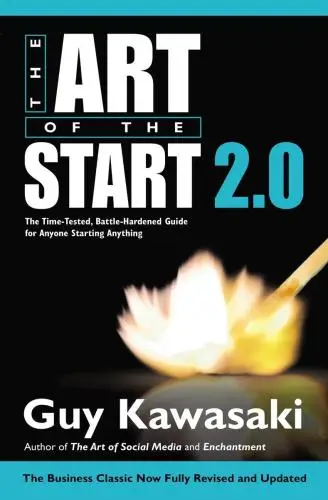
The Art of the Start 2.0
The Time-Tested, Battle-Hardened Guide for Anyone Starting Anything
What's it about?
The Art of the Start 2.0 by Guy Kawasaki is a practical guide for starting anything new, whether it's a business, a nonprofit, or a project. You will learn essential strategies for launching your idea effectively, from crafting a compelling vision to securing funding. Kawasaki simplifies complex concepts into actionable steps, ensuring you can apply them regardless of your experience level.
About the Author
Guy Kawasaki is a marketing expert and author, best known for his work as Apple's chief evangelist. His writings, including "The Art of Start" and "Enchantment," blend practical business advice with motivational insights, focusing on innovation, entrepreneurship, and the impact of technology on business strategy.
10 Key Ideas of The Art of the Start 2.0
Embrace the Art of Starting
Starting is about making meaning, creating something new that improves the world.
It's not just about making money or launching a product; it's about bringing to life an idea that can change a part of the world.
This mindset encourages innovation, drives passion, and attracts like-minded individuals who share your vision.
By focusing on making meaning, you ensure your startup has a solid foundation and a purpose that resonates with others.
Learn DeeperIdentify Your Purpose: Start by asking yourself why you want to start something. What problem are you solving? How does it improve the world or the lives of others? Write down your purpose and refer back to it whenever you need motivation or direction.
Build a Meaning-Driven Team: Surround yourself with people who share your vision and passion. Look for team members who are not just skilled but also believe in the purpose of your project. This shared belief will fuel your journey and help overcome challenges.
Communicate Your Vision: Clearly articulate what you're trying to achieve and why it matters. Whether it's through your website, social media, or in person, make sure your message resonates with your audience's values and desires.
Iterate with Purpose: As you develop your product or service, continuously ask how each feature or decision aligns with your core purpose. This ensures that your offering remains true to your vision and maximizes its impact.
Seek Feedback from Your Target Audience: Regularly engage with your target audience to get feedback on how well your product or service is aligning with the meaning you aim to create. Use this feedback to make informed adjustments.
- Example
A tech startup focuses on creating an app that helps reduce food waste by connecting restaurants with excess food to local shelters and food banks. Their purpose is to tackle food insecurity and reduce waste, guiding their development and marketing strategies.
- Example
A fashion entrepreneur launches a clothing line using only sustainable materials and ethical labor practices. Their purpose is to change the fashion industry for the better, influencing their choice of materials, suppliers, and how they communicate with customers.
Master the Pitch
A compelling pitch is crucial for attracting investors, partners, and customers.
It should be concise, powerful, and memorable, focusing on what problem your product solves and why it matters.
The pitch needs to articulate your value proposition clearly and demonstrate why your solution is unique and necessary.
Practicing and refining your pitch will make it more effective, helping you to capture the interest and imagination of your audience.
Learn DeeperIdentify Your Core Message: Start by distilling your product or service down to its essence. What problem does it solve? Why should anyone care? This will be the cornerstone of your pitch.
Craft a Compelling Story: People remember stories better than facts. Frame your pitch around a narrative that illustrates the problem, your solution, and the impact it has. Make it relatable and engaging.
Practice Your Delivery: A great pitch isn't just about what you say, but how you say it. Practice in front of friends, family, or a mirror. Pay attention to your body language, tone, and pacing. Aim for clarity and enthusiasm.
Tailor Your Pitch: Know your audience and tailor your pitch to them. Investors might be more interested in market size and revenue potential, while customers focus on how your product can improve their lives.
Use Visual Aids Wisely: If you're using slides or any visual aids, keep them simple and impactful. Each slide should support your narrative, not distract from it. Avoid clutter and focus on key points.
- Example
Imagine you've developed a new app that simplifies meal planning for busy families. Your core message could be about saving time and reducing stress around meal times. The story might involve a specific example of a family who regained quality time together thanks to your app. Tailoring your pitch, you'd emphasize the app's ease of use and time-saving features to potential users, while highlighting scalability and user engagement metrics to investors.
- Example
Consider a startup offering a revolutionary water purification device for developing countries. The core message revolves around providing clean, safe drinking water. The narrative could focus on a community that has seen a dramatic reduction in waterborne diseases since using your device. For potential partners or investors, the pitch could be tailored to discuss the social impact as well as the market potential in underserved communities.
Build a Mantra, Not Just a Mission Statement
A mantra is a three-to-four-word phrase that captures the essence of your business.
Unlike long, often vague mission statements, a mantra is powerful and memorable.
It serves as a guiding principle for your company, reminding you and your team of what truly matters.
A well-crafted mantra can inspire, motivate, and align your team, ensuring everyone is working towards the same goal.
Learn DeeperIdentify Your Core Values: Start by listing out the core values and principles that define your business. What do you stand for? What is your purpose beyond making money?
Brainstorm Mantra Ideas: With your core values in mind, brainstorm short, impactful phrases that capture the essence of your business. Aim for simplicity and memorability.
Test Your Mantra: Share your top mantra choices with team members, friends, or mentors. Ask for feedback on which phrase resonates the most and why. This can help you refine your mantra to ensure it truly represents your business.
Implement Your Mantra: Once you've chosen your mantra, make it visible. Include it in your email signature, on your website, and in your office space. Use it in team meetings and company communications to reinforce its importance.
Live by Your Mantra: Ensure that your business decisions and actions align with your mantra. It should guide your company culture, customer interactions, and strategic planning.
- Example
Google's mantra, 'Don't be evil,' succinctly captures the company's commitment to integrity and ethical behavior in all its operations.
- Example
Apple's mantra, 'Think Different,' reflects the company's focus on innovation, creativity, and challenging the status quo.
Get Going: Make Prototypes and MVPs
The best way to start is by creating.
Prototypes and Minimum Viable Products (MVPs) allow you to bring your ideas to life quickly and test them in the real world.
This approach helps you gather feedback early and iterate, improving your product based on actual user experiences.
It reduces the risk of investing heavily in unproven ideas and accelerates the learning process, enabling you to refine your offering and find product-market fit faster.
Learn DeeperStart Small: Begin with a simple, basic version of your idea. Don't worry about having all the features at first. Focus on the core functionality that solves the primary problem for your target audience.
Seek Feedback Early and Often: Share your prototype or MVP with potential users as soon as possible. Look for honest feedback about what works, what doesn't, and what could be improved. Use surveys, interviews, or beta testing to gather this information.
Iterate Quickly: Based on the feedback, make adjustments to your product. This might mean adding new features, removing ones that aren't working, or tweaking the user experience. The key is to be agile and responsive to what your users are telling you.
Measure Everything: Implement tools to track how users interact with your product. Look at metrics like user engagement, retention rates, and conversion rates to understand where you're succeeding and where there's room for improvement.
Don't Be Afraid to Pivot: If you find that your initial idea isn't hitting the mark, be willing to change direction. Sometimes, the feedback will lead you to a completely different product than you originally envisioned. That's okay.
- Example
A tech startup wants to create a new social media platform focused on artists. Instead of fully developing the platform with all intended features, they launch a basic version that allows artists to create profiles and share their work. They then collect feedback from early users to refine and add features such as galleries, collaboration tools, and event listings.
- Example
A small team is developing a new fitness app that combines workout planning, tracking, and social networking. They release an MVP that includes just the workout planning and tracking features. After gathering user feedback, they realize there's a high demand for integrating a social aspect where users can share achievements and challenge friends. They prioritize this feature in the next iteration.
Focus on Your Customer
Understanding and serving your customer is paramount.
Every decision should be made with your customer in mind, from product design to marketing strategies.
Engage with your customers, listen to their feedback, and continuously seek to understand their needs and preferences.
This customer-centric approach ensures that you build products that people love and need, fostering loyalty and driving growth.
Learn DeeperIdentify Your Ideal Customer: Start by creating a detailed profile of your ideal customer. Consider factors like age, interests, pain points, and where they spend their time online and offline. This will help you tailor your product and marketing efforts more effectively.
Gather Feedback Regularly: Use surveys, social media, and direct conversations to gather feedback from your customers. Ask specific questions about what they like and dislike about your product or service, and what improvements they wish to see.
Implement a Customer-First Culture: Encourage every team member, regardless of their role, to think about how their work impacts the customer. This could mean prioritizing user-friendly design, responsive customer service, or personalized marketing messages.
Analyze Customer Data: Leverage data analytics tools to understand customer behavior, preferences, and trends. Use this data to make informed decisions about product development, marketing strategies, and customer service improvements.
Create a Feedback Loop: Make it easy for customers to provide feedback at every touchpoint. Then, importantly, show them how their feedback has been implemented. This not only improves your product but also builds customer trust and loyalty.
- Example
A coffee shop owner notices that many customers ask for plant-based milk options. They decide to introduce almond, oat, and soy milk, and actively seek feedback on these new offerings through in-store surveys and social media polls.
- Example
A software company uses its monthly newsletter to ask subscribers for feedback on its latest feature. The company then hosts a webinar to discuss the feedback received and outline how it plans to address user suggestions and concerns in the next update.
Deeper knowledge. Personal growth. Unlocked.
Unlock this book's key ideas and 15M+ more. Learn with quick, impactful summaries.
Read Full SummarySign up and read for free!
The Art of the Start 2.0 Summary: Common Questions
I just finished "The Art of the Start 2.0" by Guy Kawasaki, and it was truly eye-opening. One quote that stuck with me was "Great companies start because the founders want to change the world... not make a fast buck." This really set the tone for the book and challenged my perspective on entrepreneurship.
Kawasaki breaks down the process of starting up a business into practical steps, covering everything from pitching ideas to utilizing social media effectively. His insights on the importance of storytelling and creating a strong company culture were particularly compelling. However, some sections felt a bit repetitive and could have been more concise.
Overall, "The Art of the Start 2.0" is a must-read for anyone looking to start their own venture. It offers valuable advice and motivation, making it a solid choice for fans of books like "The Lean Startup" by Eric Ries or "Crushing It!" by Gary Vaynerchuk.
Experience Personalized Book Summaries, Today!
Discover a new way to gain knowledge, and save time.
Sign up for our 7-day trial now.
No Credit Card Needed

Similar Books

$100M Offers
Alex Hormozi
Principles of Marketing, Global Edition
Gary Armstrong
The 100 Best Business Books of All Time
Jack Covert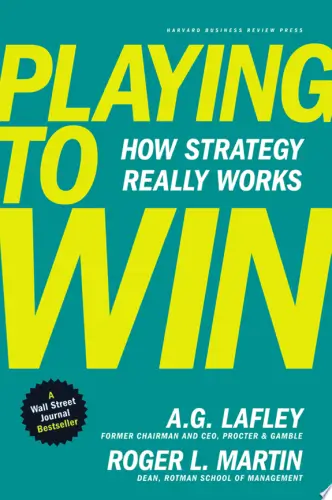
Playing to Win
A.G. Lafley
Productize
Eisha Armstrong
Start Your Own Pet-Sitting Business and More
Entrepreneur Press
The 22 Immutable Laws of Marketing
Al Ries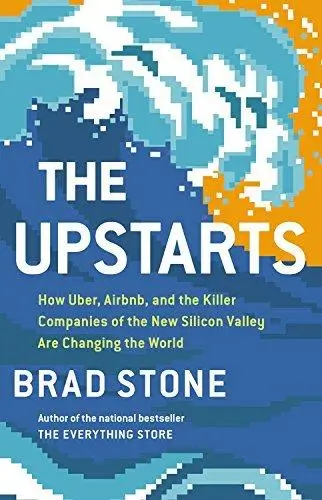
The Upstarts
Brad Stone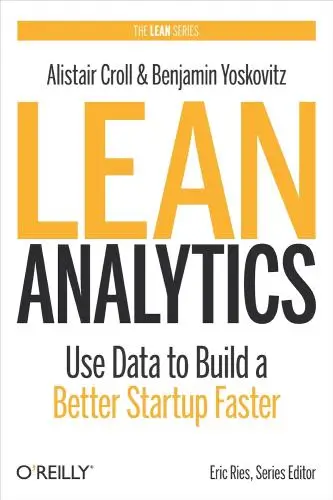
Lean Analytics
Alistair Croll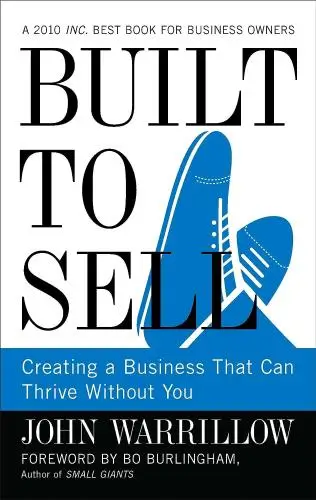
Built to Sell
John WarrillowTrending Summaries

Peak
Anders Ericsson
Never Split the Difference
Chris Voss
Smart Brevity
Jim VandeHei
The Psychology of Money
Morgan Housel
The First 90 Days
Michael D. Watkins
Atomic Habits
James Clear
Thinking, Fast and Slow
Daniel Kahneman
The Body Keeps the Score
Bessel van der Kolk M.D.
The Power of Regret
Daniel H. Pink
The Compound Effect
Darren HardyNew Books

The ^AOxford Handbook of Job Loss and Job Search
Ute-Christine Klehe PhD
Job Interviews For Dummies®
Joyce Lain Kennedy
Job Interviews In A Week
Alison Straw
Handbook of Career Development
Gideon Arulmani
The Art of Spending Money
Morgan Housel
$100M Offers
Alex Hormozi
A Candle for Kiri
Edna Mae Holm
Principles of Marketing, Global Edition
Gary Armstrong
Serpent Rising: The Kundalini Compendium
Neven Paar
